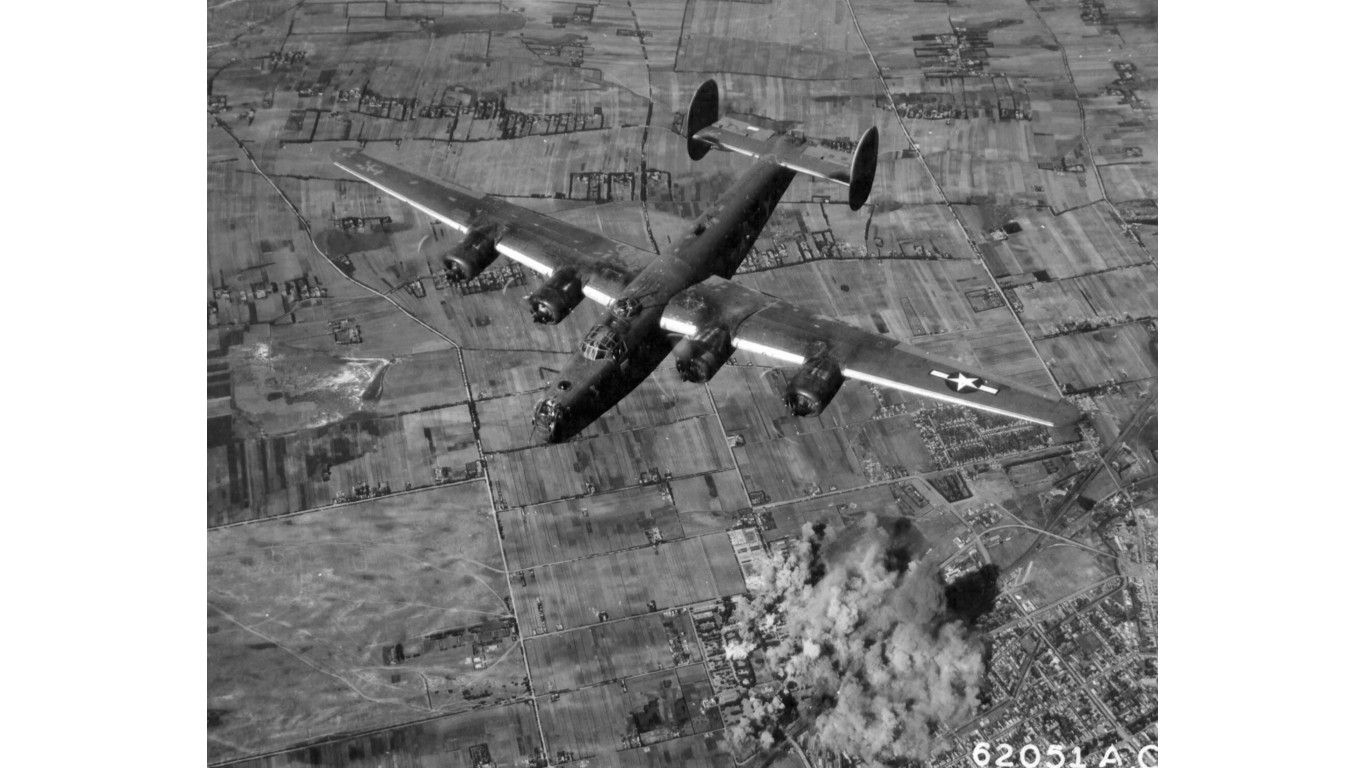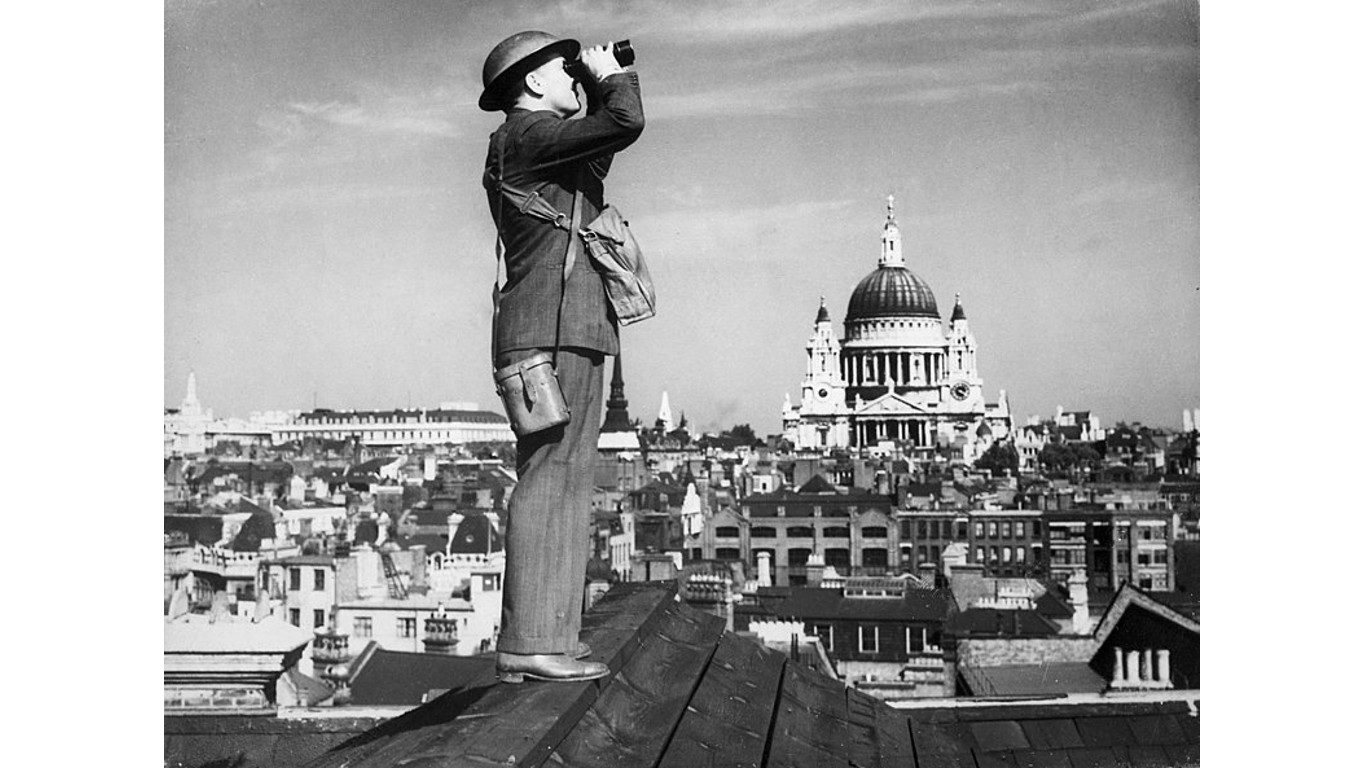
Two months after World War I began, French pilot Sgt. Joseph Frantz and his gunner, Louis Quénault, shot down a German plane near Reims, recording what is considered to be the first official aerial combat victory. Soon the term “dogfight” entered the military lexicon and engagements between German and Allied pilots were viewed by soldiers on both sides mired in trench warfare.
The popular notion of the experiences of military pilots flying over the Western Front in the early months of the war is of chivalrous exchanges between the flyers, most of whom came from the aristocratic ranks of their respective countries. This “knights of the air” illusion soon gave way to the reality of a new deadly front in the war and a prelude to history’s greatest air battles. (Air power is still a major factor in military superiority. Here are 30 combat aircraft being built for the U.S. military.)
In order to find the largest air battles in military history, 24/7 Tempo reviewed research on Norwich University, War History Online, Military History Matters, and Second World War History. Many of these air initiatives extended over many weeks, so we focused on particularly intense engagements within those campaigns. (In the air and otherwise, these are the most devastating battles in recent history.)
Click here to see the biggest air battles in military history
Most of the air battles on this list occurred during World War II, and some were part of the land and sea engagements that were pivotal to the victories of the Western Allies and the Soviet Union during history’s most horrific conflict.
Cold War confrontations in Korea and Vietnam were proxy fights between the U.S. and the Soviet Union, with American air superiority severely tested in each war. Major aerial battles have also occurred between Israel and its Arab enemies since the founding of the Jewish state in 1948.
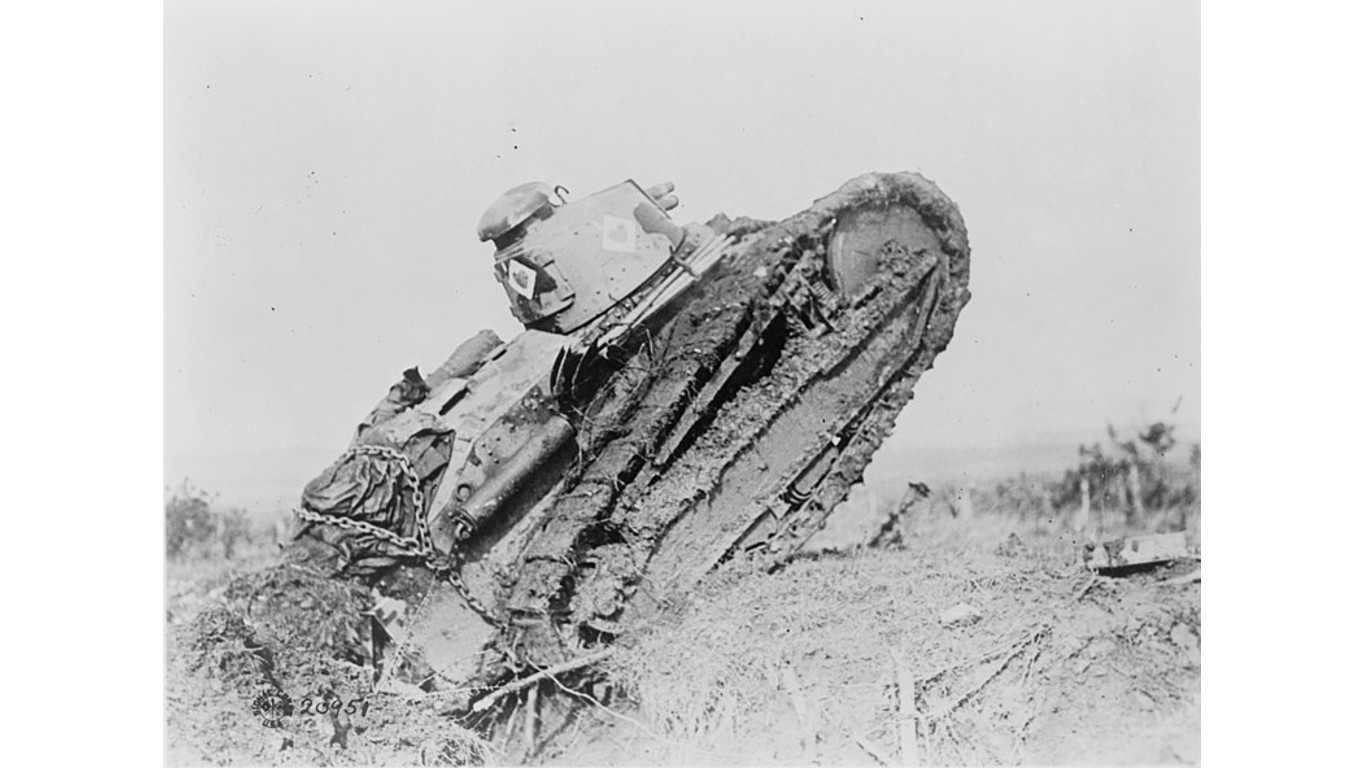
St. Mihiel, France
> Conflict: World War I
> Date(s) of battle: Sept. 12-16, 1918
> Combatants: Germany / United States, France
> Aircraft used: Germany 500 / U.S., France 1,476
The Allies were developing more sophisticated uses of air power in concert with ground forces in the last months of World War I. A major operation involved breaking through the salient around the French city of St. Mihiel, part of the “Hundred Days’ Offensive” by the Allies that ended with the surrender of the German Empire. The Allies utilized their nearly three-to-one air superiority during the battle, with each side losing about the same number of planes, and air power was a major factor in the Allied victory.
[in-text-ad]

Khalkhin Gol, Mongolia
> Conflict: Soviet-Japanese border conflicts
> Date(s) of battle: May 11-Sept.16, 1939
> Combatants: Japan / Soviet Union
> Aircraft used: Soviet Union 900 / Japan 400
The Soviet Union was engaged in border disputes with Japan in the run-up to the Second World War, including the Battles of Khalin Gol, which lasted more than four months. The Soviet Union was victorious, but Japan produced a new hero in flying ace pilot Hiromichi Shinohara. Known as “The Richthofen of the Orient” (after famed WWI German flyer Baron Manfred von Richthofen), he had no flying experience before joining the military, but claimed 58 victories over a three-month period and on one occasion shot down 11 Soviet planes in one day. Shinohara was killed in aerial combat.

Britain
> Conflict: World War II
> Date(s) of battle: July 10-Oct. 31, 1940
> Combatants: Germany / Great Britain
> Aircraft used: Germany 1,887-2,800 / Great Britain 675
After the spectacular fall of France to the Nazis in June 1940, Germany was poised to end all resistance in Europe by doing something no nation had done since William the Conqueror in 1066 – successfully invade England by sea. To do this, the Germans needed to defeat the Royal Air Force. Reichsmarshal Hermann Goering was confident that his Luftwaffe could do the job. But the British, supplemented by expat pilots from captive nations such as Poland and Czechoslovakia, were more than a match for the German air force. The long-running air battle marked the first success by the Allies over Germany and scuttled Nazi invasion plans.

Midway
> Conflict: World War II
> Date(s) of battle: June 3-6, 1942
> Combatants: Japan / United States
> Aircraft used: Japan 272 / United States 348
Six months after the attack on the American Pacific fleet at Pearl Harbor, the Imperial Japanese Navy sought to eliminate the U.S. aircraft carriers that had been out at sea that fateful day. American code breakers succeeded in determining Japanese naval strength and position ahead of a planned attack near Midway, an American island possession in the middle of the Pacific Ocean. Tactical errors by Japanese leaders led to a crushing defeat as American aviators sank all four Japanese aircraft carriers. The Japanese lost 300 planes while the U.S. lost 145, and the Japanese never regained the naval initiative in the PacificI.
[in-text-ad-2]
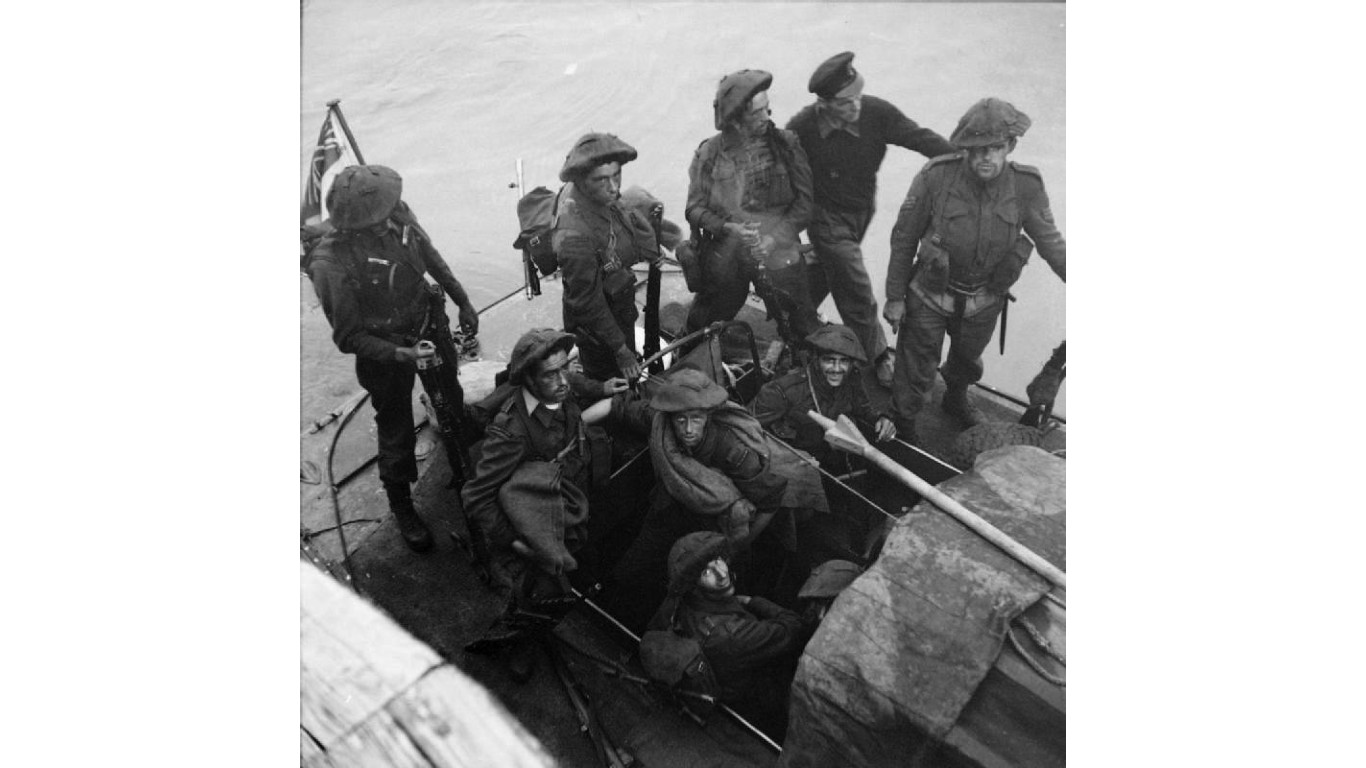
Dieppe, France
> Conflict: World War II
> Date(s) of battle: Aug. 19, 1942
> Combatants: Germany/Western Allies
> Aircraft used: Germany unknown / Great Britain, Canada 74 squadrons
Almost two years before the D-Day invasion of France, the Allies launched an amphibious attack on the French port of Dieppe with support from the Royal Air Force and Royal Canadian Air Force. The results were disastrous as invading troops foundered on the beach because Germany had advance knowledge of the invasion; Allied intelligence of German defenses was poor; and there was a lack of coordination. The Luftwaffe lost 48 planes and the Royal Air Force had 106 aircraft shot down. It was the largest single day of air combat in World War II up to that point.
Kursk, Soviet Union
> Conflict: World War II
> Date(s) of battle: July 4-Aug. 23, 1943
> Combatants: Germany / Soviet Union
> Aircraft used: Germany 2,000 / Soviet Union 2,792
The Battle of Kursk, also called Operation Citadel, is famous for its titanic clash of tanks between the Soviet Union and Nazi Germany. However, the battle also featured a massive engagement of aircraft, with almost 5,000 planes involved in combat. The Germans deployed 65% of their air power on the Eastern Front for the offensive, trying. The Germans tried to reduce the salient around the city of Kursk and failed. They never went on the offensive in the East again after their defeat here.
[in-text-ad]
Philippine Sea
> Conflict: World War II
> Date(s) of battle: June 19-20, 1944
> Combatants: Japan / United States
> Aircraft used: Japan 700 / U.S. 1,000
The Allies attempted to roll back Japanese conquests in the Pacific in an island-hopping campaign that included retaking the Philippines. The aerial combat In the Battle of the Philippine Sea was dubbed “The Great Marianas Turkey Shoot” because of the disproportionate loss-ratio inflicted on Japanese aircraft by U.S. pilots and anti-aircraft gunners. The battle involved almost 1,700 planes â about 1,000 American and 700 Japanese. The United States destroyed 300 Japanese planes on the first day. Some 90% of the American pilots returned safely and the majority of the pilots who were lost had run out of fuel and crashed. By this point in the Pacific War, American technology, pilot-and crew-training and tactics, aircraft design, and a shortage of skilled Japanese pilots had given the U.S. a commanding advantage.

Sunnfjord, Norway
> Conflict: World War II
> Date(s) of battle: Feb. 9, 1945
> Combatants: Germany / Western Allies
> Aircraft used: Germany 12 / Western Allies up to 46
The end of World War II was still three months off when aircraft from Nazi Germany and the Western Allies engaged in aerial combat over Sunnfjord, Norway. The battle started out as a mission to attack a German destroyer and its escorting vessels, carried out by a force of Allied Bristol Beaufighters, but it failed. At times during the battle, there were more than 50 aircraft fighting it out over the skies of Sunnfjord, and the Allies suffered heavy casualties during the battle – which would become known as “Black Friday.”
Big Week
> Conflict: World War II
> Date(s) of battle: Feb. 19-25,1944
> Combatants: Germany / United States, Great Britain
> Aircraft used: Germany unknown / Allies 1,831
The Western Allies hoped to gain greater control of the skies over Europe and diminish German industrial capacity ahead of the invasion of France later in 1944 with a sustained air campaign beginning in February. After weather had delayed attack plans, the Royal Air Force and the United States Army Air Force reined down destruction night and day, beginning on Feb. 19. By the end of “Big Week,” the Allied assault had resulted in the loss of 226 bombers and 28 escort fighters, as well as 290 combatants, many of them irreplaceable experienced pilots. German fighter production also was disrupted, and the Luftwaffe lost its mystique of invincibility.
[in-text-ad-2]
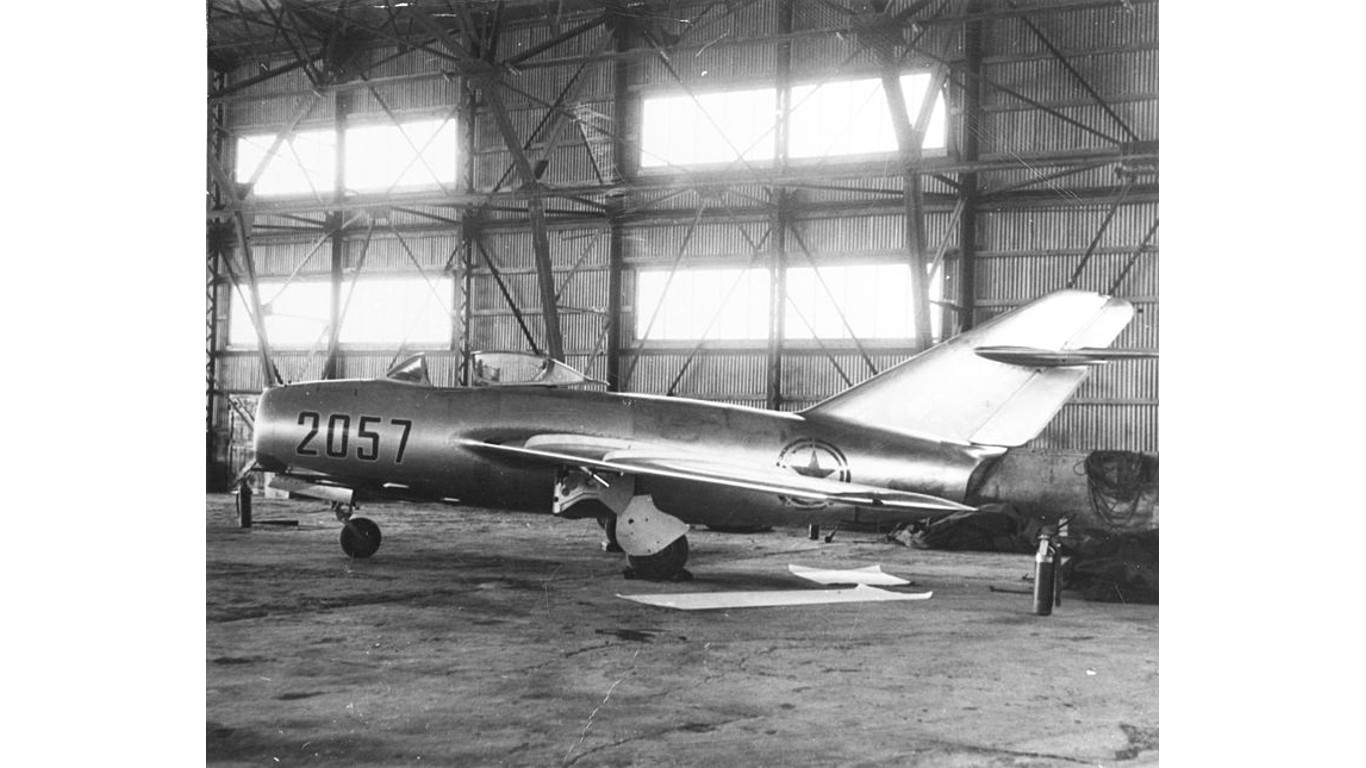
MIG Alley, North Korea
> Conflict: Korean War
> Date(s) of battle: April 12, 1951
> Combatants: United States / North Korea, Soviet Union
> Aircraft used: U.S. 136 / North Korea, Soviet Union 30
On a date also known as “Black Thursday,” 12 American aircraft were shot down by MiG-15s, possibly flown by Russian pilots, over the area known as “MiG Alley” on the North Korean-Chinese border. Thirty-six B-29 superfortresses and 100 F-80 Shooting Stars and F-84 Thunderjets faced 30 MiG-15s. The Americans failed to down a single MiG-15 in the encounter. “MiG Alley” is considered to be the birthplace of jet combat. The battle showed the B-29 superfortress was becoming obsolete.
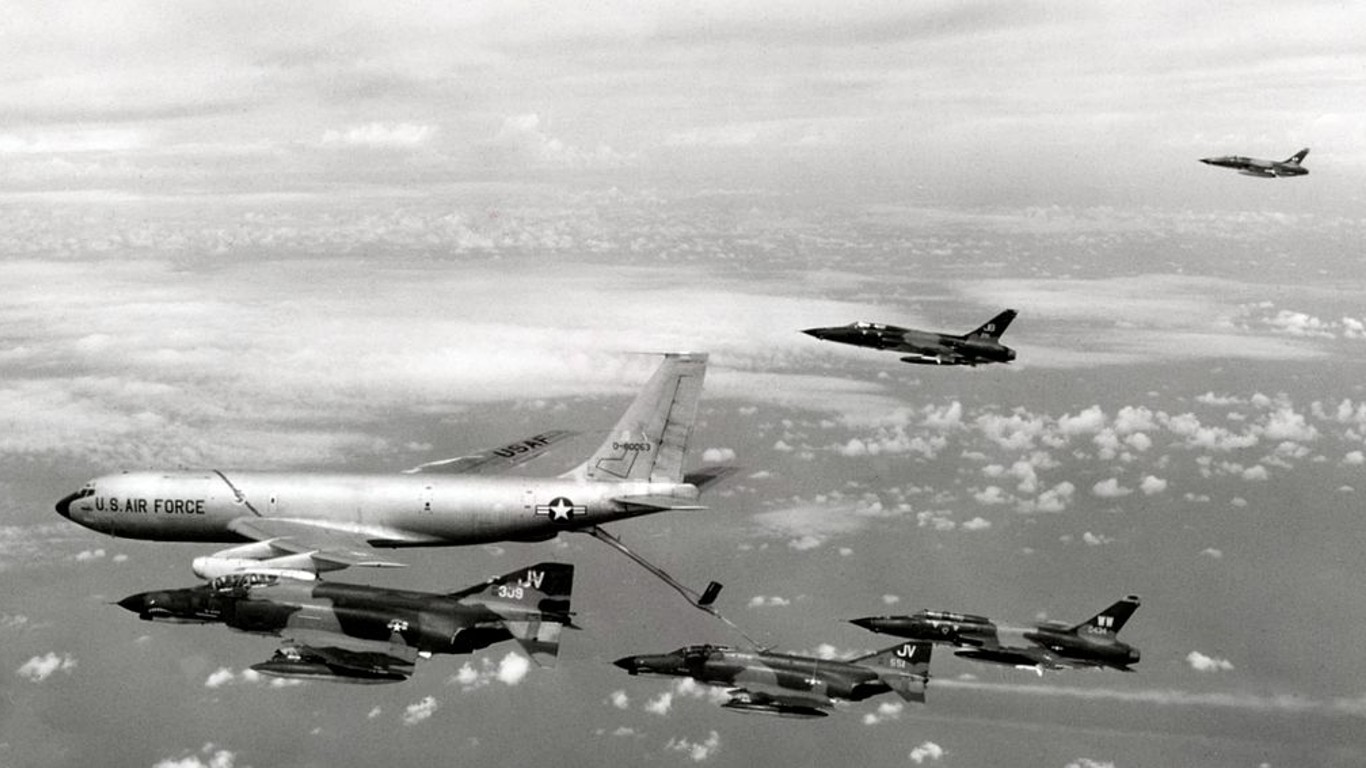
Operation Linebacker, Vietnam
> Conflict: Vietnam War
> Date(s) of battle: May 10, 1972
> Combatants: United States / North Vietnam
> Aircraft used: U.S. 30 / North Vietnam unknown
By mid-1972, as the United States was weighing options for withdrawal from Vietnam, President Nixon approved of Operation Linebacker, which would focus American air power against targets such as airfields, power plants, and radio stations to disrupt the flow of supplies and reinforcements to communist units fighting in the South. During the operation, North Vietnamese MiGs engaged in combat but failed to gain control of the sky. On May 10, 1972, American pilots shot down 11 MiGs, the most in a single day of the Vietnam War.
[in-text-ad]
El Mansoura, Egypt
> Conflict: Yom Kippur War
> Date(s) of battle: Oct. 14, 1973
> Combatants: Israel/Egypt
> Aircraft used: Israel 120-164/Egypt 62
During the Six-Day War in 1967, Israel achieved a stunning victory in less than a week over its Arab enemies, predicated on destroying planes from Egypt, Syria, and Jordan on the ground. Israel tried to replicate the result during the Yom Kippur War six years later, but the Egyptian Air Force saw incoming jets and got airborne in time to fight Israeli planes. The battle between Israel and Egypt, which lasted under an hour, was nonetheless one of the longest aerial battles between jets. Outnumbered by at least 2-1, Egypt managed to down 10 to 18 Israeli jets while losing three to seven of its own.
Operation Mole Cricket 19-Beqaa Valley, Lebanon
> Conflict: Arab-Israeli Conflict
> Date(s) of battle: June 8-9, 1982
> Combatants: Syria / Israel
> Aircraft used: Syria 100 / Israel 90
Operation Mole Cricket 19 over Lebanon’s Beqaa Valley, involving almost 100 aircraft from Israel and Syria, was one of the largest air battles since World War II. Over two days, Israel shot down at least 82 Syrian aircraft without losing a single plane. Israel also destroyed 19 Syrian surface-to-air missile batteries. The battle ended in a ceasefire imposed by the U.S.
Find a Qualified Financial Advisor (Sponsor)
Finding a qualified financial advisor doesn’t have to be hard. SmartAsset’s free tool matches you with up to 3 fiduciary financial advisors in your area in 5 minutes. Each advisor has been vetted by SmartAsset and is held to a fiduciary standard to act in your best interests. If you’re ready to be matched with local advisors that can help you achieve your financial goals, get started now.
Thank you for reading! Have some feedback for us?
Contact the 24/7 Wall St. editorial team.
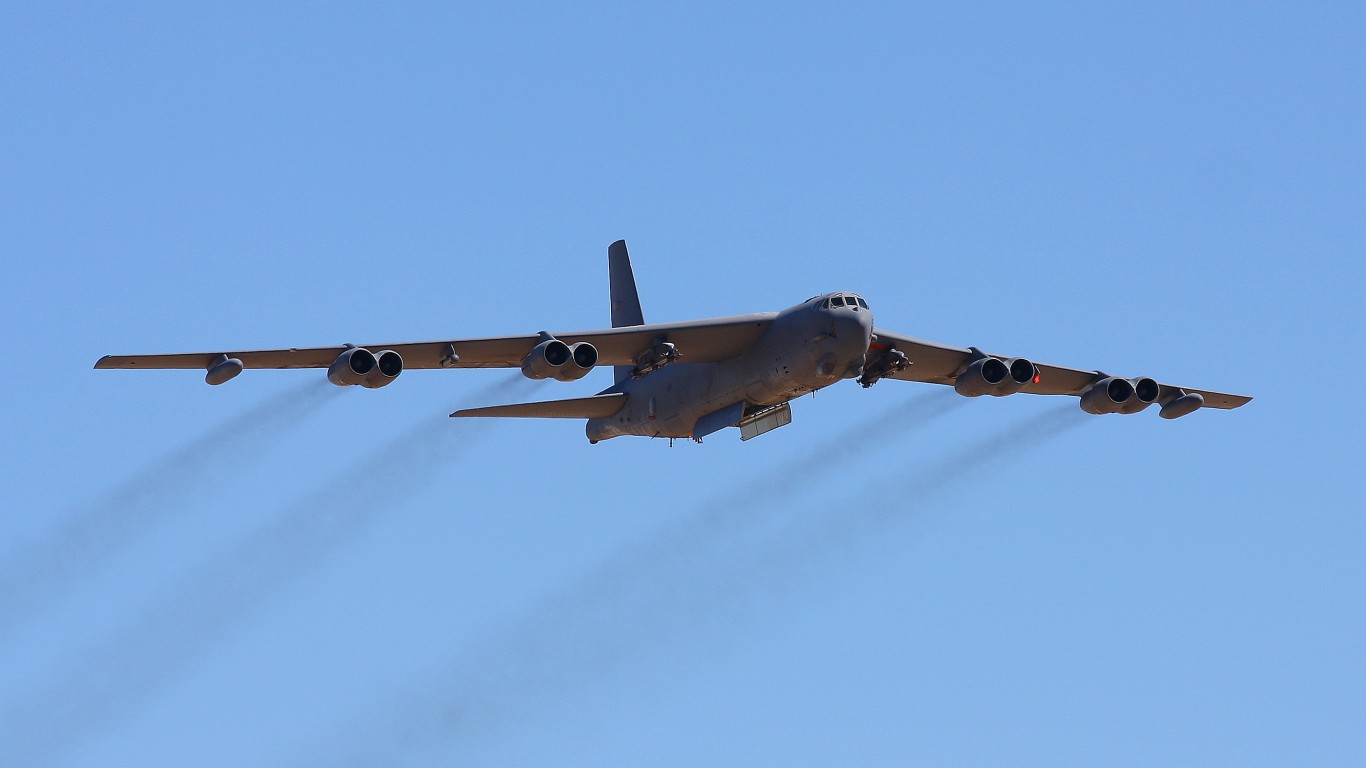 24/7 Wall St.
24/7 Wall St.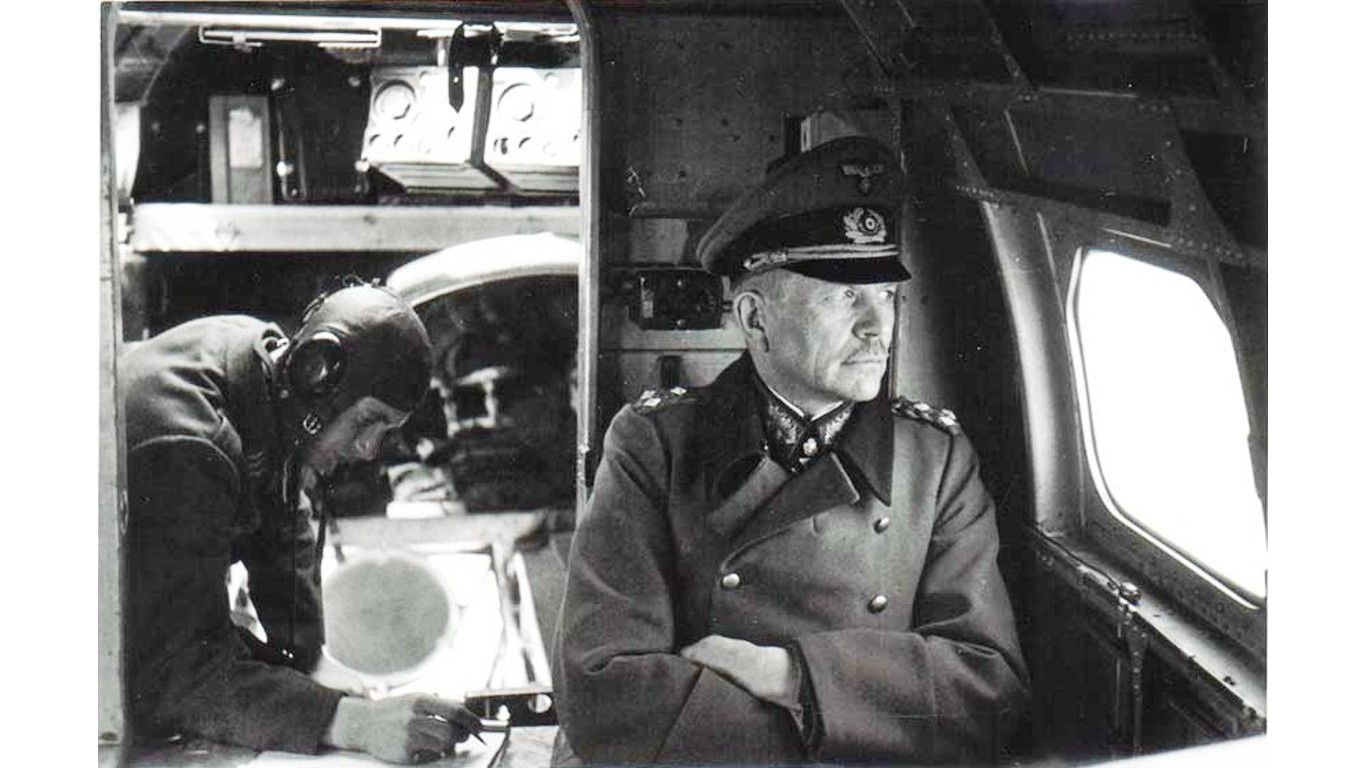

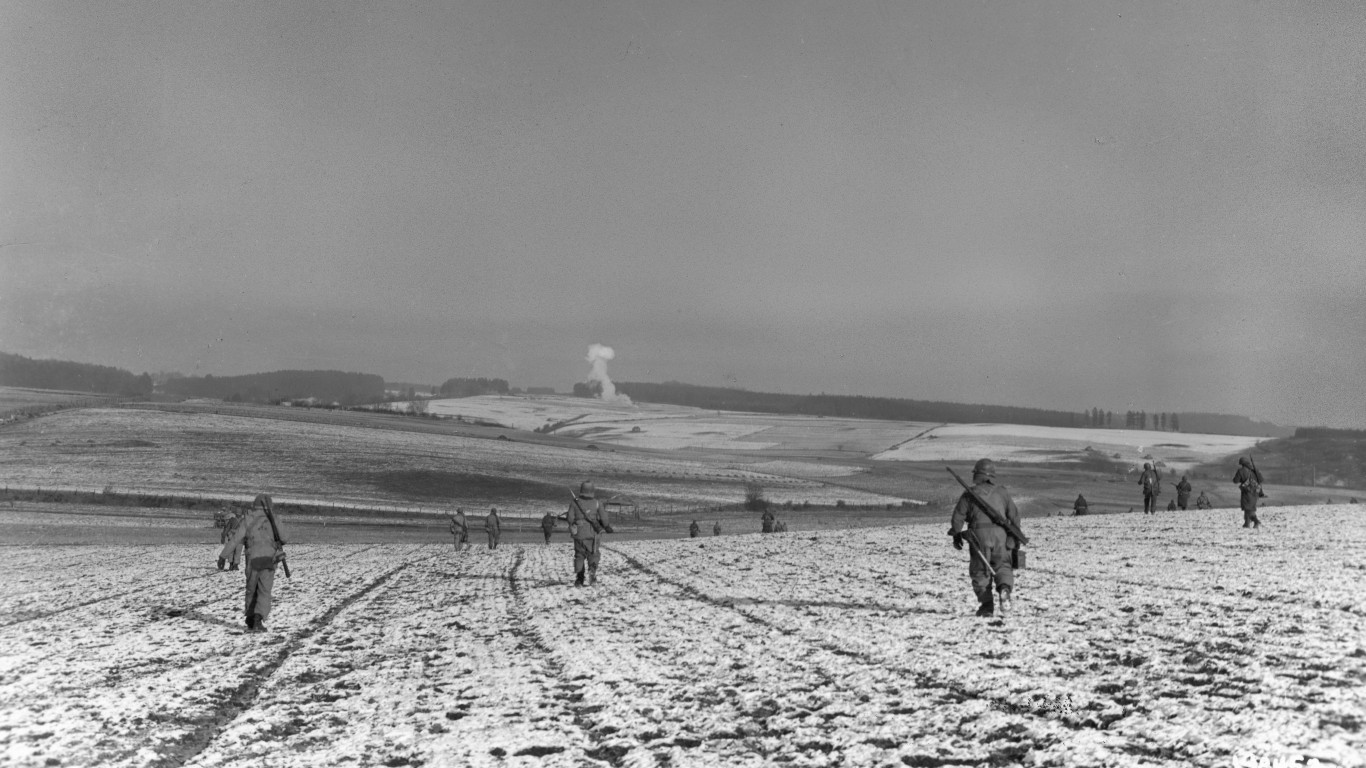 24/7 Wall St.
24/7 Wall St.